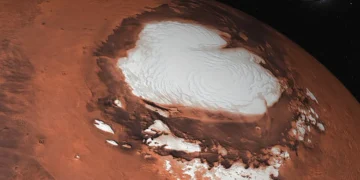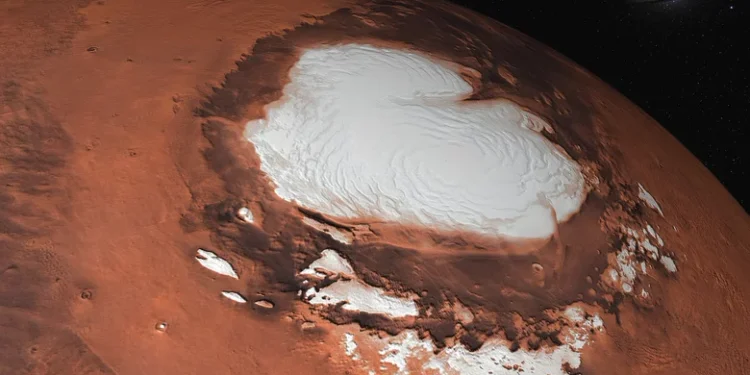Imagine a world where vast oceans exist, not above ground but hidden deep beneath the surface. This isn’t science fiction; it’s the reality on Mars, where recent research has uncovered substantial liquid water reserves trapped within the mid-crust, potentially reshaping our understanding of the Red Planet.
The findings from NASA’s InSight lander, which used seismic data to probe Mars’ interior, reveal a significant reservoir of liquid water. This water, located between 11.5 and 20 kilometers below the surface, is stored in fractured rock, making up volumes that might have once filled Martian oceans hypothesized by scientists.
Mars was not always the barren landscape we see today. Evidence suggests it was once brimming with water, with river channels and lake deposits indicative of a much wetter past more than 3 billion years ago. However, as the planet lost its atmosphere, it also lost its surface water. Unlike previous beliefs that this water escaped into space, the latest data suggests much of it sank into the Martian crust.
This underground water is not just a relic of the past; it opens new doors for future missions and the possibility of life. Accessing this water is a significant challenge due to its depth and the technology required to drill into Martian rock. Yet, this hidden water reservoir could serve as a crucial resource for future Martian colonists and as a potential habitat for life, much like Earth’s deep biospheres where life thrives in extreme conditions.
The InSight lander’s mission has been pivotal in uncovering these secrets. By detecting marsquakes and studying the seismic waves that travel through Mars, scientists have been able to gather data suggesting the presence of liquid water. The findings are based on changes in wave speeds, which indicate how seismic waves travel through different materials—solid rock versus water-filled fractures.
The implications extend beyond understanding Mars’ geological history. They suggest a method for future explorations to target underground water reservoirs, which are less vulnerable to the harsh Martian environment and could sustain future human missions or even microbial life.
This groundbreaking research, detailed in the journal Proceedings of the National Academy of Sciences, not only deepens our understanding of Mars but also inspires a renewed interest in what lies beneath its surface. The quest to uncover Mars’ secrets and potentials continues, with each discovery bringing us one step closer to potentially finding life beyond Earth.



















